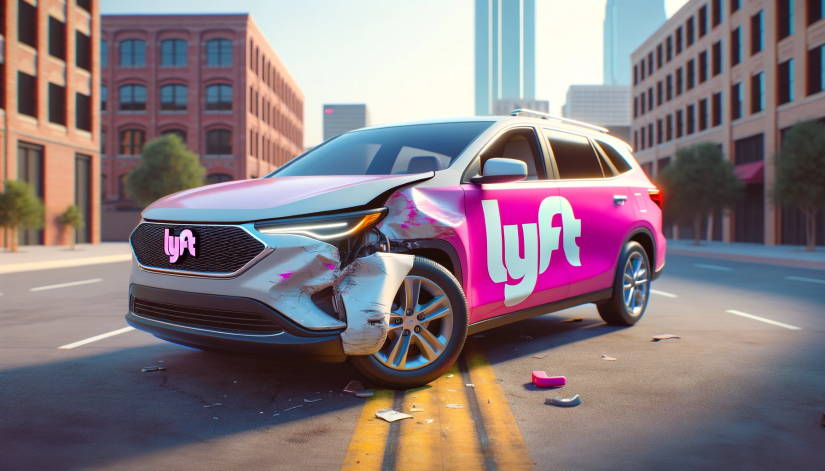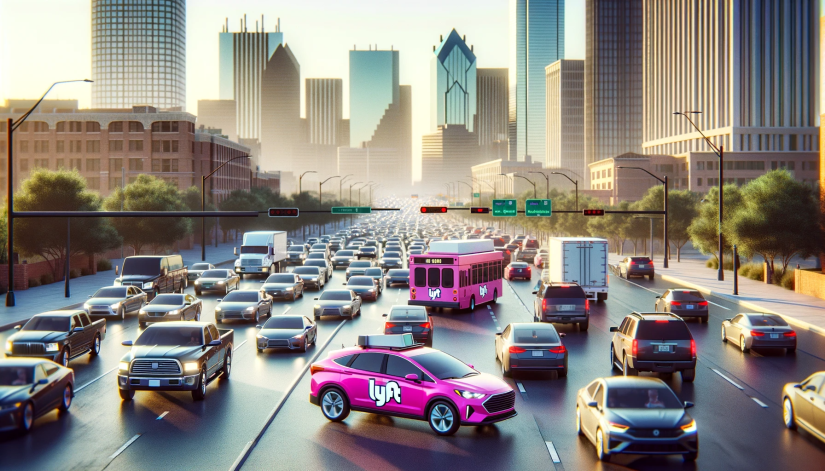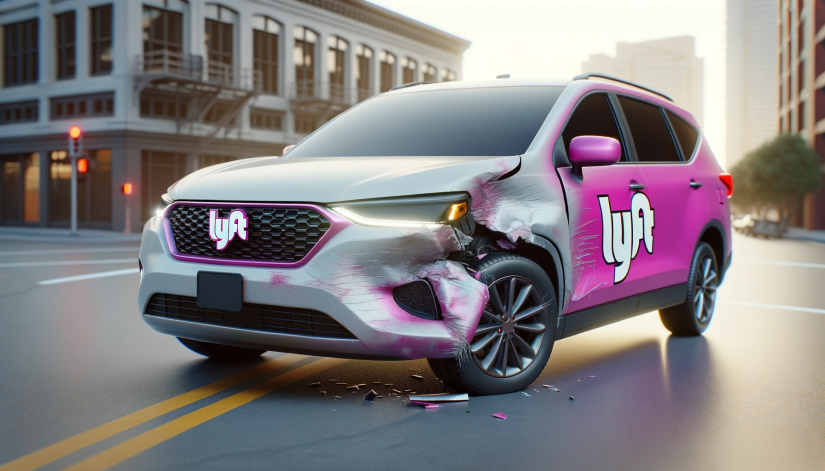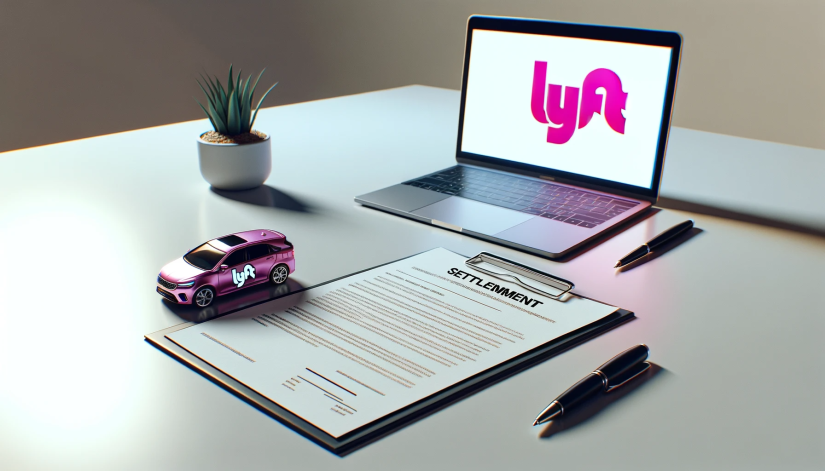Dallas Lyft Accident Claims and Settlements Guide
December 31, 2023

When involved in a Lyft car accident in Dallas, navigating the claims process is crucial for securing a fair settlement. Understanding the steps to take, determining liability, and knowing how Lyft’s insurance coverage works can make a significant difference in the outcome of your claim. In this guide, I will provide valuable information on the Dallas Lyft accident claims process, helping you protect your rights and ensure your well-being is taken care of.
- Determining Liability in a Lyft Accident
- Understanding Lyft’s Insurance Coverage
- Steps to Take After a Lyft Accident
- Lyft Driver Deactivation and Suspension
- Lyft Accident Settlement Factors
- What to Do After Being Involved in a Rideshare Accident
- 1. Check everyone’s well-being
- 2. Obtain a police report
- 3. Refrain from admitting fault
- 4. Gather evidence
- 5. Contact a rideshare accident attorney
- Conclusion
Determining Liability in a Lyft Accident

In the unfortunate event of a Lyft accident, it is crucial to determine liability accurately. Liability in a Lyft accident can be attributed to various parties involved, including the Lyft driver, other drivers, Lyft itself, and third parties. The specific circumstances of the accident play a crucial role in determining who may be held liable.
To accurately establish liability, a thorough investigation is necessary. Gathering evidence such as witness statements, police reports, and surveillance footage, if available, is crucial in determining fault. Analyzing the facts of the case, including driver actions, road conditions, and any violations of traffic laws, can provide valuable insights into liability.
In some cases, the Lyft driver may be solely responsible for the accident. However, liability can also be shared among multiple parties, such as when another driver’s negligence contributes to the accident. Additionally, Lyft itself may bear some liability if negligence or a breach of duty can be proven on their part.
It is important to note that liability in a Lyft accident can be complex, and each case should be evaluated on its own merits. Consulting with a skilled personal injury attorney experienced in rideshare accidents can provide valuable guidance in navigating the legal process and ensuring your rights are protected.
Several factors can influence the determination of liability in a Lyft accident:
- The behavior and actions of the Lyft driver involved
- Any contributing actions or negligence by other drivers
- Potential vehicle defects or maintenance issues
- Weather conditions and road hazards
- The adherence to traffic laws and regulations
An in-depth analysis of these factors, along with supporting evidence, can help build a strong case for liability. It is crucial to work closely with your legal representation to gather all relevant information and establish a compelling argument.
| Possible Parties Liable in a Lyft Accident | |
|---|---|
| Lyft Driver | The Lyft driver may bear responsibility for the accident if their actions, such as distracted driving or reckless behavior, contributed to the collision. |
| Other Drivers | If another driver’s negligence, such as running a red light or rear-ending the Lyft vehicle, caused the accident, they may be held liable. |
| Lyft | If Lyft failed to adequately screen their drivers, provide necessary training, or properly maintain their vehicles, they may share liability in the accident. |
| Third Parties | In some cases, liability may extend beyond the Lyft driver and other drivers involved. For example, if a defective vehicle part contributed to the accident, the manufacturer or distributor may also be held liable. |
Understanding Lyft’s Insurance Coverage

Lyft provides comprehensive insurance coverage to protect both its drivers and passengers in the event of an accident. It’s important to understand the different types of insurance coverage provided by Lyft to ensure you have the necessary protection in case of an unfortunate incident.
Lyft Liability Insurance
Lyft’s liability insurance coverage comes into play when a driver is using the Lyft platform. The coverage is designed to protect drivers, passengers, and third parties who may be affected in case of an accident. The extent of liability coverage depends on the driver’s activity during the accident:
- Contingent Liability Coverage: When a driver is online but has not accepted a ride request, Lyft provides contingent liability coverage. This coverage is secondary to any personal insurance the driver may have and applies to bodily injury and property damage caused by the driver.
- Primary Liability Coverage: Once a driver accepts a ride request and is actively transporting passengers, Lyft provides primary liability coverage. This coverage applies to bodily injury and property damage caused by the driver, up to specified limits.
Lyft Accident Insurance
In addition to liability coverage, Lyft also offers accident insurance to protect its drivers in case of injuries sustained during a ride. This coverage is intended to cover medical expenses, lost income, and other related costs resulting from a covered accident. The accident insurance provided by Lyft offers essential protection to drivers, ensuring that they have access to necessary medical care and financial support should they get injured while driving for Lyft.
Lyft Driver Insurance
For individuals who drive for Lyft, it’s crucial to understand the insurance coverage provided by the platform. Having this knowledge can help drivers make informed decisions about their personal insurance policies and ensure they have adequate coverage. It’s recommended that Lyft drivers consult their insurance providers to determine the appropriate insurance coverage for their specific circumstances.
Lyft Passenger Insurance
Lyft also extends insurance coverage to protect its passengers. In the event of an accident, Lyft’s insurance policies cover passengers for any injuries they may sustain. This insurance is designed to provide peace of mind to passengers, assuring them that they are protected while using Lyft’s services.
Understanding Lyft’s insurance coverage is vital for both drivers and passengers. It’s important to be aware of the coverage provided and any applicable deductibles or conditions. By having a clear understanding of Lyft’s insurance policies, you can navigate potential accidents with confidence, knowing that you have the necessary protection.
Steps to Take After a Lyft Accident
After a Lyft accident, it is crucial to take immediate action to protect your well-being and preserve your rights. Follow these steps to ensure you handle the situation properly:
- Ensure Safety: Prioritize your safety and the safety of others involved in the accident. Move to a safe location away from traffic if possible.
- Seek Medical Attention: If you or anyone else is injured, call 911 or seek medical assistance immediately. Your health is of utmost importance.
- Report the Accident: Contact the local authorities to report the accident. Provide them with accurate and detailed information about the incident.
- Gather Information: Collect necessary information from all parties involved in the accident, including their names, contact details, and insurance information. Take photos of the accident scene, vehicle damage, and any visible injuries.
- Report to Lyft: Report the accident to Lyft through their app or website. Provide them with all relevant details and document the incident report number for future reference.
- Preserve Evidence: Preserve any evidence related to the accident, such as photos, witness statements, medical records, and receipts for expenses incurred as a result of the accident.
- Contact a Lyft Accident Lawyer: Consult with a personal injury attorney experienced in handling Lyft accidents. They can guide you through the claims process, protect your rights, and ensure you receive the compensation you deserve.
Taking these steps after a Lyft accident can help protect your well-being and ensure a smoother claims process. Remember to consult with an attorney who can provide you with the necessary legal guidance and support throughout the entire process.
| Benefits of Taking these Steps: | Consequences of Not Taking these Steps: |
|---|---|
|
|
Lyft Driver Deactivation and Suspension
Lyft has strict guidelines and policies in place to ensure the safety and quality of their rideshare service. As a Lyft driver, it is essential to understand the terms and policies set forth by the company to avoid driver deactivation or suspension.
One of the primary reasons a Lyft driver may face deactivation or suspension is a consistently low driver rating. When a driver fails to meet the minimum rating requirements set by Lyft, it raises concerns about the quality of service they provide to passengers. It is crucial for drivers to prioritize passenger satisfaction and strive to maintain a high rating.
Additionally, Lyft drivers must adhere to the company’s safety standards and practices. Any violation of safety protocols or reckless behavior that jeopardizes the well-being of passengers can result in driver deactivation. It is important for drivers to prioritize safety at all times and maintain a clean driving record.
Familiarizing oneself with Lyft’s terms and policies is crucial for drivers to avoid any violations that could lead to deactivation or suspension. These terms and policies cover various aspects, including driver behavior, vehicle maintenance, and operations. Drivers must review and understand these guidelines to ensure compliance.
In case of a driver deactivation or suspension, Lyft provides a clear process for drivers to appeal their status. This process involves contacting Lyft support, providing any necessary documentation or explanations, and demonstrating a commitment to improving their performance or addressing any concerns. By following this process, drivers have an opportunity to rectify any issues and regain their active status as a Lyft driver.
| Reasons for Deactivation/Suspension | Ways to Avoid Deactivation/Suspension |
|---|---|
| Consistently low driver rating | Maintain a high rating by providing excellent service to passengers |
| Safety concerns or violations | Adhere to all safety standards and prioritize passenger safety |
| Violation of Lyft’s terms and policies | Familiarize yourself with Lyft’s guidelines and ensure compliance |
| Process for appeal and regaining active status | Follow Lyft’s appeal process and provide necessary documentation |
By understanding and adhering to Lyft’s guidelines, drivers can maintain an active status on the platform and continue providing reliable transportation services to passengers.
Lyft Accident Settlement Factors

Settling a Lyft accident claim involves several factors that can influence the timeframe and outcome of the settlement. Understanding these factors is crucial for navigating the process effectively.
- Number of Parties Involved: The settlement process may take longer if multiple parties are involved in the accident. Each party’s insurance company, legal representation, and cooperation can impact the negotiation process.
- Cooperation of Each Party: The willingness of all parties involved to cooperate and provide relevant information can significantly affect the settlement process. This includes sharing accident details, medical records, and any additional evidence necessary to determine liability.
- Severity of Injuries: The severity of injuries sustained in the Lyft accident can influence the settlement amount. More severe injuries generally require longer and more extensive medical treatment, resulting in higher settlement demands.
- Determination of Fault: Establishing fault is essential for determining liability and, ultimately, the settlement outcome. Thorough investigation and evidence collection are vital for proving fault and securing a fair settlement.
Working with a knowledgeable rideshare accident attorney can streamline the settlement process and ensure that all necessary steps are taken in a timely manner. They can guide you through the negotiation process, advocate for your rights, and help you achieve a favorable settlement.
| Factors | Description |
|---|---|
| Number of Parties Involved | The more parties involved, the more complex the negotiation process |
| Cooperation of Each Party | Willingness to share information and work towards a fair settlement |
| Severity of Injuries | The extent of injuries affects medical costs and settlement demands |
| Determination of Fault | Proving fault is crucial for determining liability and securing a fair settlement |
By considering these factors and seeking legal guidance, you can navigate the Lyft settlement process successfully and ensure a fair outcome for your accident claim.
What to Do After Being Involved in a Rideshare Accident
If you find yourself involved in a rideshare accident, it’s important to take the appropriate steps to ensure your safety and protect your rights. Follow this checklist to navigate the aftermath of a rideshare accident:
1. Check everyone’s well-being
Prioritize checking on the well-being of all involved parties, including passengers, drivers, and pedestrians. If there are any injuries, promptly call emergency services for medical assistance.
2. Obtain a police report
Contact the local authorities and request a police report to document the details of the accident. This report can serve as crucial evidence during the claims process.
3. Refrain from admitting fault
Avoid admitting fault or assigning blame at the scene of the accident, as it may impact liability determinations. Stick to providing objective information to the authorities and insurance companies.
4. Gather evidence
Collect as much evidence as possible from the accident scene. This may include photographs of the vehicles involved, damage sustained, road conditions, and any visible injuries. Additionally, gather contact information from witnesses who can provide statements supporting your case.
5. Contact a rideshare accident attorney
It is highly recommended to consult with a rideshare accident attorney or personal injury lawyer who specializes in these types of cases. They can provide expert guidance, protect your rights, and navigate the complex claims process on your behalf.
By following these steps after a rideshare accident, you can ensure that your well-being is prioritized, necessary documentation is obtained, and your legal rights are protected. Remember, seeking professional help from a rideshare accident attorney is crucial to maximize your chances of receiving fair compensation.
Conclusion
Being involved in a Lyft accident in Dallas can be a complex and overwhelming experience. However, with the right knowledge and guidance, you can protect your rights and achieve a favorable outcome. By understanding the claims process, determining liability, and navigating Lyft’s insurance coverage, you can secure a fair settlement for your Lyft accident claim.
Throughout this comprehensive guide, we have provided valuable information on how to navigate the aftermath of a Lyft accident. Remember to prioritize your safety and well-being, seek medical attention, and report the accident to the relevant authorities. Additionally, be sure to gather all necessary evidence and document the details of the accident.
To maximize your chances of a successful settlement, it is highly recommended to consult with a knowledgeable Lyft car accident lawyer in Dallas. They can guide you through the complex legal process, negotiate with insurance companies on your behalf, and ensure that your rights are protected every step of the way.
With the right information, support, and legal representation, you can confidently pursue your Lyft accident claim, seeking the compensation you deserve for your injuries, damages, and losses. Remember that time is of the essence, so don’t delay in taking the necessary steps to secure your rightful settlement.